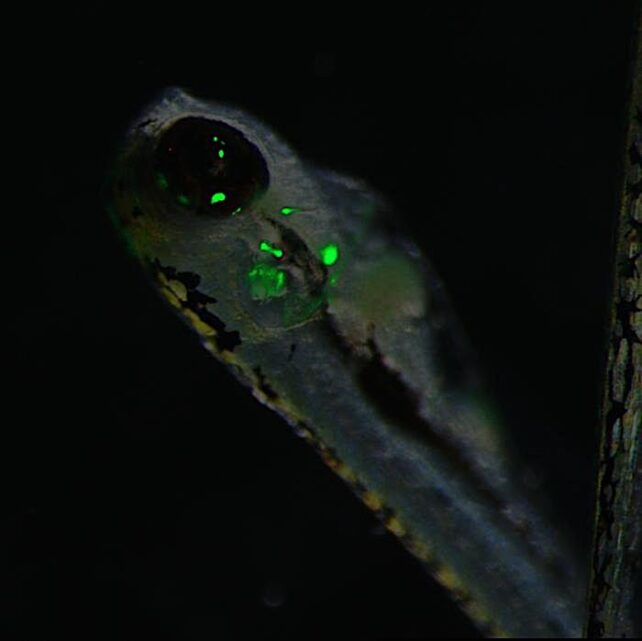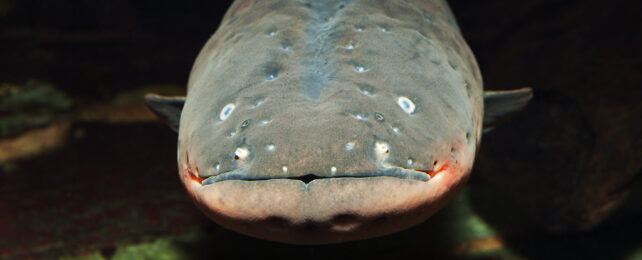Electric eels can discharge a staggering 860 volts of energy into their surroundings – over seven times that of a standard US power outlet.
That's more than enough voltage to punch holes in cell membranes, allowing large polar molecules like DNA to sneak inside.
"Electric eels and other organisms that generate electricity could affect genetic modification in nature," says Nagoya University molecular biologist Atsuo Iida, who tested this theory with other researchers in Japan.
Led by Shintaro Sakaki, the team had baby zebrafish swim in water to which DNA featuring genes for a glowing protein had been added.
They then introduced an electric eel (Electrophorus electricus) into the mix and goaded it into zapping by dangling a fishy lure before it.

Sure enough, 5 percent of the zebrafish larvae developed tissues that glowed green, whereas the control group, which also went swimming in a glow-gene solution but encountered no electric eels, had little fluorescence at all.
"This indicates that the discharge from the electric eel promoted gene transfer to the cells, even though eels have different shapes of pulse and unstable voltage compared to machines usually used in electroporation," explains Iida.
Applying electric pulses to a cell causes its membrane to destabilize and open temporary pores, allowing foreign molecules that would normally be blocked by the cell's fatty wrapping to enter.
Known as electroporation, this process has been used for drug delivery since the 1980s, and later to deliver DNA fragments into cells.

Previously, scientists proposed that natural electroporation may occur in soil thanks to lightning, but this has yet to be demonstrated.
"I realized that electric eels in the Amazon River could well act as a power source," says Iida.
"Organisms living in the surrounding area could act as recipient cells, and environmental DNA fragments released into the water would become foreign genes, causing genetic recombination in the surrounding organisms because of electric discharge."
This exchange of genes between unrelated species is known as horizontal gene transfer. Bacteria are notorious for making use of this process as it allows them to quickly snatch up and incorporate genes for antibiotic resistance, but horizontal gene transfer wasn't known to be common amongst multicellular species until relatively recently.
Scientists have since identified examples between tardigrades and fungi, as well as plants and whiteflies, allowing the flies to overcome plant insecticides.
Even our eyes seem to have been shaped by genes stolen from bacteria. Guts are a key environment where this gene transfer takes place between animals and their microbiome.
While their research doesn't yet confirm gene transfer via electric eels occurs outside a laboratory, Sakaki and team demonstrate it is a possibility.
As very few species can generate electric shocks, this phenomenon is likely rare, but it is another natural avenue horizontal gene transfer can take in animals – adding even more complexity to the already messy-as-heck process that is evolution.
"I believe that attempts to discover new biological phenomena based on such "unexpected" and "outside-the-box" ideas will enlighten the world about the complexities of living organisms and trigger breakthroughs in the future," Iida concludes.
This research was published in PeerJ.
